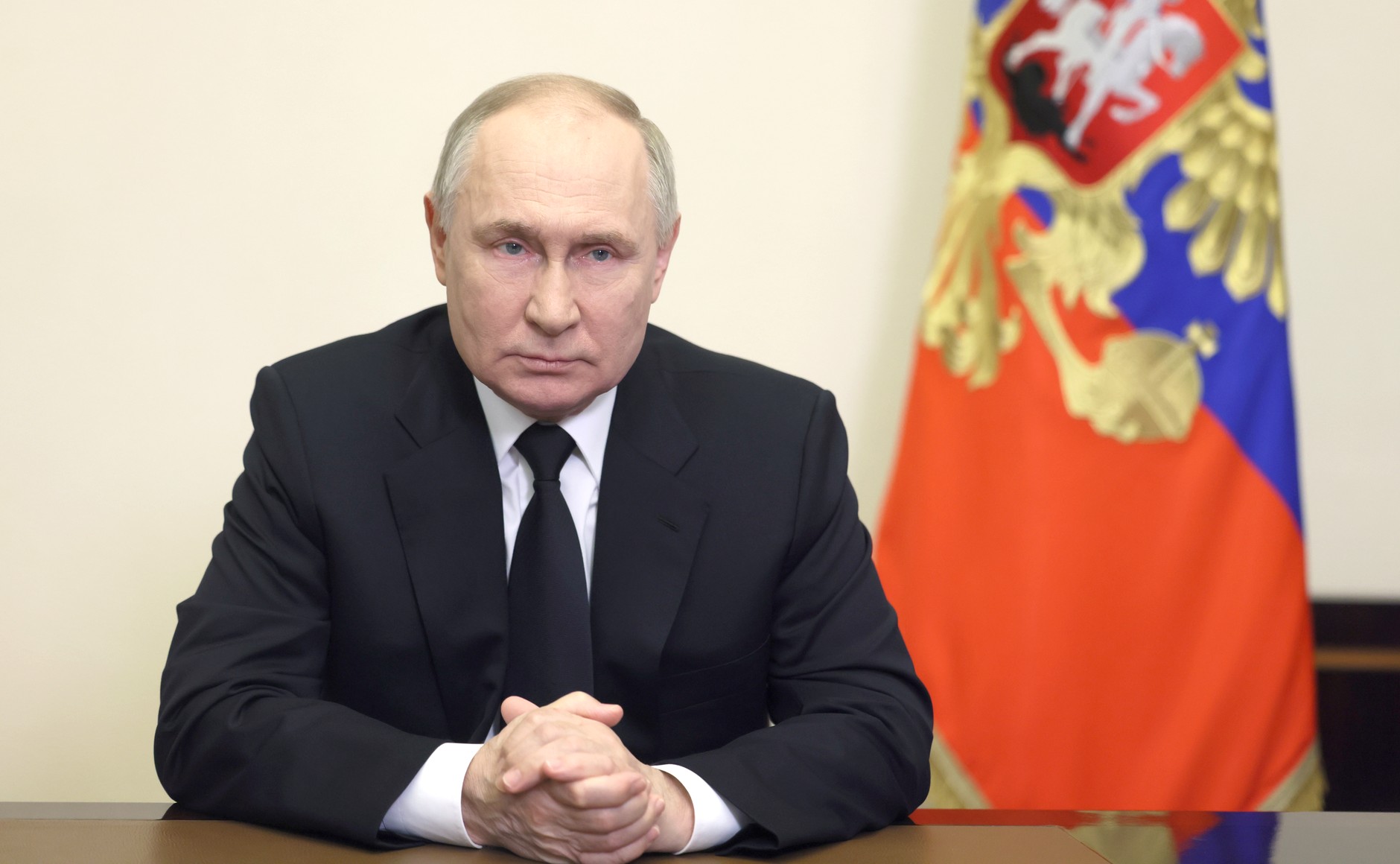 Putin addresses the recent attack on Crocus City Hall
Putin addresses the recent attack on Crocus City Hall
Putin’s Fraudulent Russian Election
Last Friday a Russian concert hall was attacked in what Putin falsely claimed was a Ukrainian-linked radical Islamist terrorist attack. U.S. and Ukrainian sources have confirmed that the attack was carried out by ISIS affiliates and had nothing to do with Ukraine. Seeking to deflect blame for his failure to prevent this terrorist attack despite the warnings he received from the U.S., it appears that Putin’s autocratic control over Russian society does not provide him the ability to heed a warning and protect the Russian people from a real, rather than imaginary security threat. The attack comes on the heels of the least free Russian election since the collapse of the Soviet Union. Although the official results gave Putin a 87% win over his chosen opponents, many observers question the outcome as they witnessed election fraud and new tactics of election engineering.
So why did Putin go through all the trouble to stage a mock democratic election when his win was already guaranteed? The answer lies in Putin’s stalling war in Ukraine. The political charade could be described as both a distraction and a “comeback.” The war is growing in cost for Russia and posing a politically dangerous situation for Putin. The “election” provided a distraction for both the global and Russian audience from the losses that the Russians are accruing in the over two-year war. Furthermore, the “election” was intended to show Russian support for Putin and his leadership in the war, whether it existed or not. The high voter-turnout claims and 87% win provided Putin with at least the appearance of popular support.
However, the charade was imperfect: protests, election fraud, and obviously illegitimate opponents stymied the picture-perfect win Putin desired.
Before his death, Russian political dissident Alexei Navalny called for a “Noon-against-Putin” protest. Russians flooded polling stations and embassies abroad at noon on the last day of voting to show their disagreement with Putin’s continued regime. Though across Russia and abroad people gathered in large numbers, it was not enough to amount to more than a symbolic display of dissent through voting against Putin or spoiling their ballots. Others symbolically voted for Navalny or attended his grave as a protest. Other protests included two women who were arrested for pouring dye into the ballot boxes, wives of soldiers protesting at the Kremlin, and wearing anti-war or anti-Putin items into the polling station.
Several polling place workers reported various evidence of fraud in the counting and handling of votes. Examples of the fraud include falsifying results (taking votes from other candidates and giving them to Putin), opacity when it came to counting, mishandling of votes in safes, and arbitrarily ignoring proper procedure. This “election” also had new components, as it took place over three days from March 15th through 17th, which many saw as an opportunity to tamper with the votes overnight. Additionally, online voting was allowed for the first time which made it hard to verify results.
Putin’s “election” had the appearance of alternative candidates but closer scrutiny reveals that they were, as all legitimate opposition candidates had been barred, jailed, or killed. The candidates that were allowed to run included Nikolai Kharitonov, the communist party candidate, Leonid Slutsky, an ultra-nationalist, and Vladislav Davankov, who favors peace talks on Russian terms. These three candidates were chosen to present alternatives to the media without presenting the reality of a challenge. The candidates all support Putin, refuse to criticize him or his “special military operation, and especially in the case of Slutsky serve to portray Putin in a better light.
Putin has also been stepping up government repression of dissent in Soviet-style control measures. There are currently 260 people serving jail terms for anti-war stances, and a recorded 20,000 people detained since the start of the Ukraine invasion, according to human rights group OVD-Info. These detentions and arrests serve to deter the rest of the population from protest or dissent. In addition to these classic methods, Putin’s government is also monitoring social media platforms, on which posting or reposting anti-war content can lead to jail terms. In truly Soviet-era style, students are banned from using people labeled as “foreign agents” as sources, and many modern authors are also banned.
This election also differed in the Russian occupied areas of Ukraine. People were forced by soldiers in balaclavas to attend the voting stations and vote for Putin. Those who did not comply were rounded up and taken to “basements” or informal prisons.
It’s important to look at just how horribly distorted this pantomime of democracy is as Putin continues to barrage the media with falsities and attacks. One such example is Putin’s hypocritical attack of the American justice system for the prosecution of former President Trump. Putin hopes that by tearing down the legitimacy of actual democracies while presenting an “election” he can show his own legitimacy. But it is important to recognize these strategies for what they are, and to understand that no matter what sham he puts up, Putin is no longer the legitimate democratically elected president of Russia.





